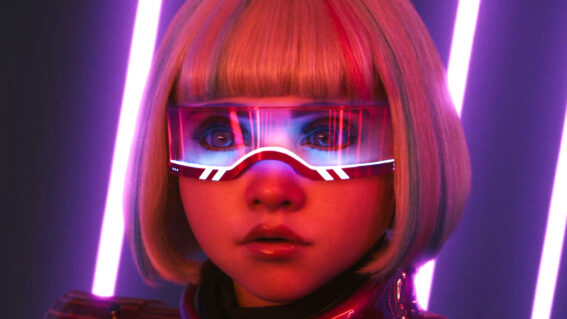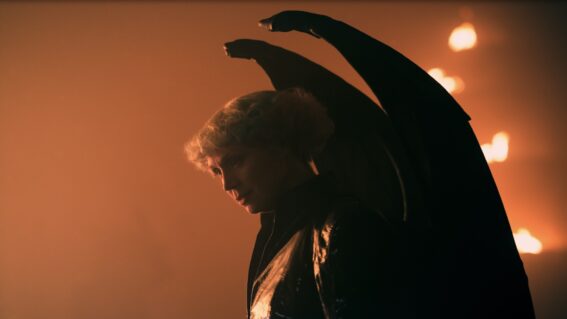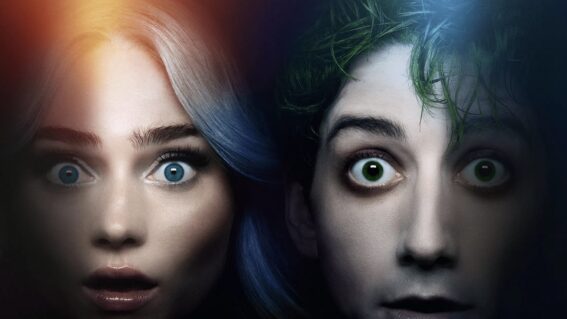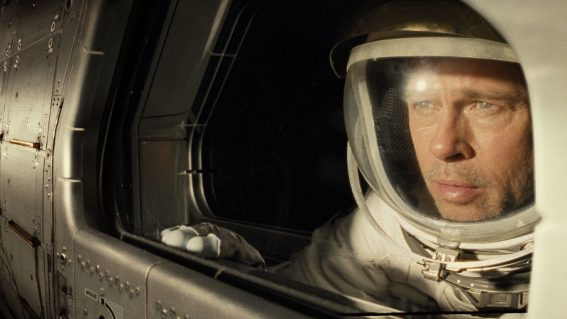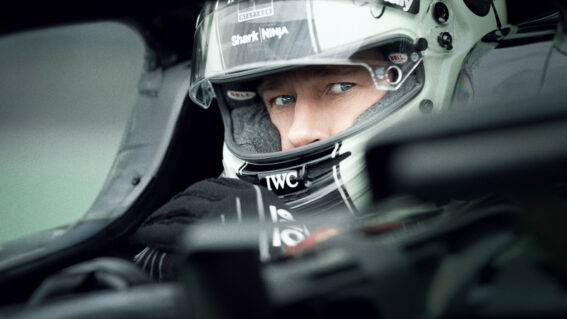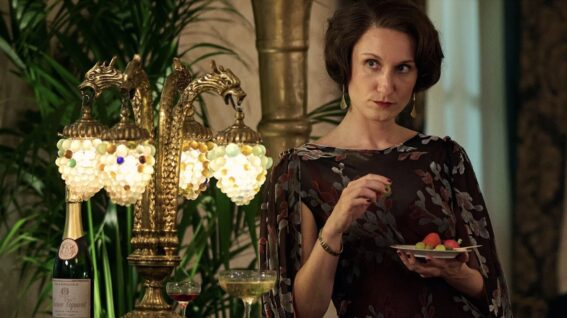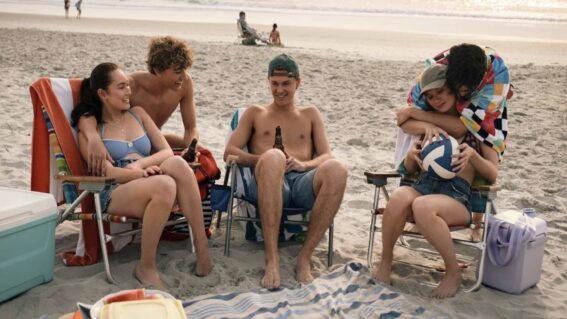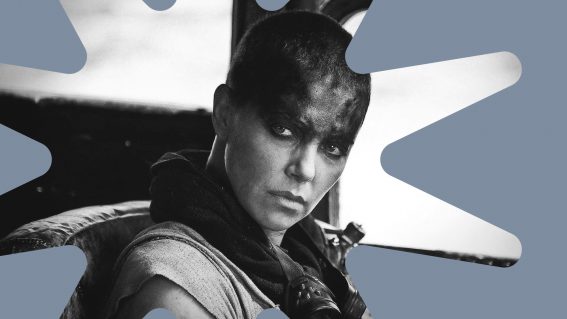Interview: Florian Habicht Talks ‘Spookers’ (and what his Dad thought of it)
Florian Habicht has a track record of teasing the extraordinary out of often-ordinary interview subjects and settings. (Please note – before outraged Jarvis Cocker fans write in en masse, we are not lumping him in with this lot, despite Habicht’s last effort being Pulp: A Film About Life, Death & Supermarkets). What would he make of […]
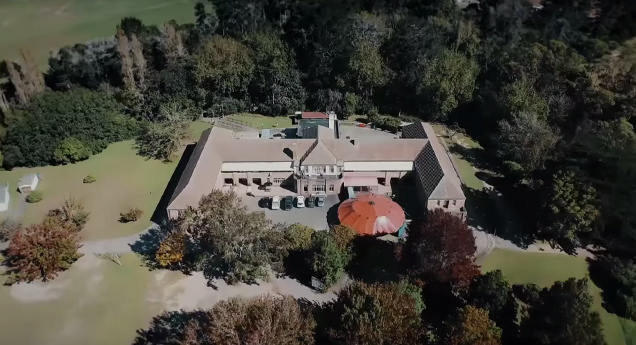
Florian Habicht has a track record of teasing the extraordinary out of often-ordinary interview subjects and settings. (Please note – before outraged Jarvis Cocker fans write in en masse, we are not lumping him in with this lot, despite Habicht’s last effort being Pulp: A Film About Life, Death & Supermarkets).
What would he make of the folks behind the terrifying masks and larger-than-life characters in Spookers, I wondered? The scare park has become an New Zealand entertainment institution, after earlier being an Auckland psychiatric institution – but how would Habicht find a story to tell?
I caught up with Habicht in Australia ahead of the film’s first showing at the Sydney Film Festival to find out more about the making of Spookers. Seeing the film with an Australian audience the next day also proved a couple of things – they laughed in nearly all the right places and in my four-star review for Flicks I was able to describe Spookers as a “highly watchable exploration of scares and self-expression”.
Check out Spookers first when it plays at the NZ International Film Festival.
FLICKS: It’s nice to be joining you in Sydney. Does it feel different from getting ready to show a film to people back home?
FLORIAN HABICHT: Well, usually New Zealand is the first time, the International Film Festival in Auckland is usually the first time I see the film with an audience. Whereas, I wasn’t able to attend Hot Docs [the Toronto festival where Spookers had its World Premiere], so that this will be the first time I see it shown with humans. The Civic screening is still for me, the most exciting one. Probably because I know so many people – and the stars on the ceiling.
What’s it like getting ready to watch a film with an audience for the first time after working on it for so long?
Well, this film is a bit different because on my last films, I’ve had two screenings showing the almost finished film to friends, and I kind of can gauge it so I don’t have to be nervous about the actual film. “Are people going to hate it? Was it really bad?” or “I’ve kind of got a good feeling”. Whereas this one, when we showed it to friends it was really, really early on in the process, but the actual finished film, we did so much to it that I haven’t really had that experience. I guess this one will be a little bit more, not nerve-wracking but more like, “I hope they like it”. That kind of thing, I hope they like it.
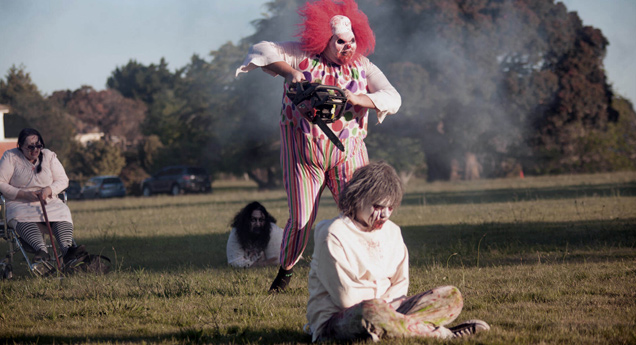
There’s so much in ‘Spookers’ that doesn’t doesn’t necessarily rely on an audience being New Zealanders, but Kiwis might relate more closely to it, get it on first viewing a bit more. So does that make tonight’s screening more of a risky proposition?
Yeah, probably. I’ve noticed, with the Pulp film for example, some countries didn’t really get all of it, all of the subtleties. And, yeah, I do think Spookers is number one a Kiwi film [laughter]. Yeah, we’re going to like it the most.
What was it like meeting the people that ended up becoming the subjects of the film?
It was kind of strange because I really wanted to say “no” to making the film so I could focus on my drama I was making. But when Madman asked me, I just decided I’m going to go to Spookers with my camera and do a little test, just so I really know I can say “no”. But I went there, and that was actually with Paul Scantlebury [GM of Flicks] assisting. I went there to do like a little test, and that’s when I was like, “Oh my God. I love this place. I can’t not make this film.”
In the first 5 or 10 minutes with the camera, there were maybe 50 people getting ready in this one building. Like, putting on makeup, prancing around, this great The Muppet Show energy and atmosphere. There were eight characters I was drawn to immediately, and I asked some questions and stuff, and they’re like the main characters in the film. You know, there’s 200 people at Spookers. So it’s just kind of interesting how that came about.
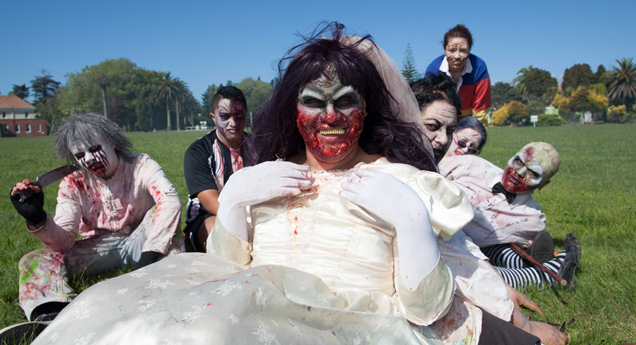
Do you feel like you’ve got an eye for finding the right subjects quite quickly?
A nose. I’ve got a nose for it [laughter].
I’m really curious about what happens before the footage that we see on the screen in your films. Are there long conversations that move them into a certain place where they’re ready to talk about the things they do?
Like how Chris and Miriam spent one year living in that rugby community [Christopher Pryor and Miriam Smith’s The Ground We Won]? Or when they had made the film about the nuns [How Far Is Heaven], I think they worked for a year in Jerusalem making that. And I’m the complete opposite where my style is like when you go to the doctor and they’re about to give you an injection, and you get the injection in your arm before you actually get a chance to look at it and get freaked out or feel the pain. So it’s the opposite approach. So when you say you’d like to see what happens before, I think my whole process is that I’m pushing record right at the front. The getting trust with the people happens on camera. It’s not beforehand.
That’s interesting. I suppose it gives your subjects less of an opportunity to put up camera defenses as well then, right?
Yeah. I mean, I think it’s helpful. It helps the people. And when I made Love Story myself, I did the exact same thing to myself and Masha. In that we were put under the camera the second we met. I think it’s just easier then. You get over the nervousness after five minutes that there’s a camera there, and that becomes just the natural sort of way to go.
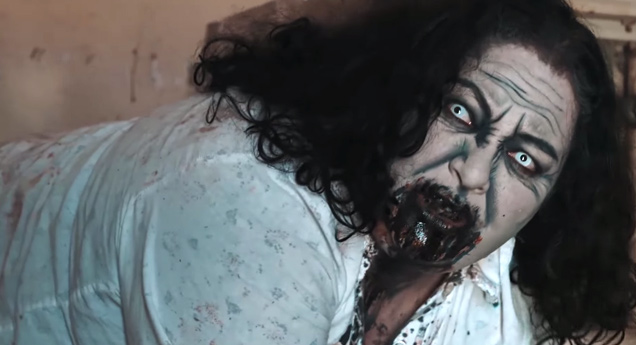
It’s really great when you can sort of start to see around the edges of the character that they’re playing. You mentioned basically just kind of jump into it and start shooting, were there moments in the camera or behind the camera, you just knew that you’re getting great stuff in the moment?
Yeah, definitely, yeah. Particularly with Juneen that was the first time. She was the one who found insurance work too stressful.
That’s such a great part of the film.
There’s so much great stuff of hers that isn’t in the film. Yeah. I gave my parents a sneak preview of the film and they really love it. My dad was like, “Oh, this is better than Pulp, Florian [laughs]. Better than Pulp.” But they loved it that in the interviews, how they kept their makeup on for most of the time.

I want to go back to the genesis of the film and it being something that was brought to you. Has that happened with projects in the past, or have your previous films all been things that you’ve developed yourself from the start?
All myself, from the start. I probably get five things a year shown to me, and asked if I want to make them. And it’s kind of a range of projects from a relative who’s wanting to talk about their life to overseas production companies. Or I’ve had a few famous musicians now who wanted me to work with them. But this is the first time someone else has come to me where I’ve gone, “Yeah, I could really make this my own film.” And Madman were really into that as well.
So how much of a sort of germ of an idea did they bring? Was it just “here’s a location and there’s these stories behind these characters”?
Well, at the time, Spookers were thinking about opening a scare park in Australia, near Melbourne. And their idea was making a film about Julia from Spookers taking it to Australia. And that’s where the whole Australia/New Zealand co-production came from.
There’s often many interesting reasons for those co-productions, but yeah, I wondered about that.
Yeah, but right from the beginning, I was a lot more interested in other parts when I went there. Like the mental health history. Like the fact that it was in the Kingseat Hospital. You just couldn’t not make a film about that. It was just so big. When you go to Spookers you just feel the energy. Some people say it’s haunted – whatever, it is – but you feel the history I felt and it’s really thick and full on.
It’s interesting how the history of the site dovetails not only with what they’re doing thematically at Spookers, but also with what is undoubtedly a thread of mental health that’s running through the people in the film as well. How did that layer up for you as an outsider?
Well, those layers I discovered… as you do in the film, is kind of how I discovered them during making the film. And seeing people that work there dress up and act like people that were locked up in an institution, that’s really full on. And so many of them do it. Especially women tend to go for those kind of characters. I can’t ever imagine what it would be like to be at Kingseat, but I am really sure that Kingseat now is doing better things for mental health, from what I’ve heard. Because I’ve talked to people that have been at Kingseat. And lots of things they said they didn’t want to have in the film because they’re very critical. And lots of people didn’t want to be in the film. But I don’t know. I just think what’s happening there now is deeply and really positive for so many people.

What feelings do you get when you go out to the site? And I’m not thinking Spookers specifically, but just the building itself? There are still people living there, is that right?
Yeah, there’s lots of people living there. But when you drive up, you first see the hospital building which they copied off the design of a hospital in England. So it feels quite kind of English and it’s just really intense to see that building and then immediately imagine the history. And I’ve seen photos of what it used to look like – lots of beautiful trees, they planted palm trees. It’s just intense. You pull up and it’s just like, “Whoa.”
Alongside interviews there are really visually interesting dream sequences. I don’t know if that’s something that would have been envisaged in a film about taking a theme park to Australia.
No, it wasn’t [laughter].
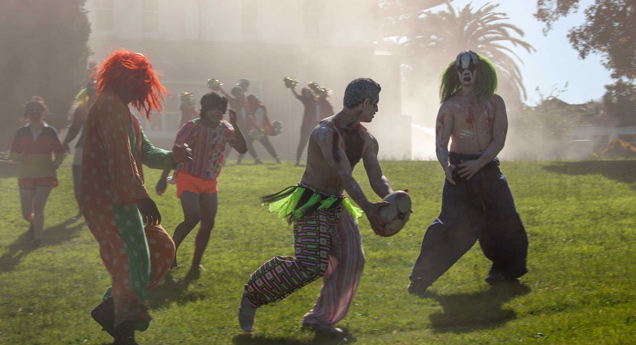
How was it working with the subjects of the film to incorporate them into those parts?
It was amazing, one, because they’re all artists and performers and makeup artists that are self-trained. They taught themselves and they teach each other. And they’re really generous teaching each other. When new people join, they’ll share all their secrets and stuff with them, how to do it. But I felt like I was making a film with fellow artists, and having learned my craft at Elam Fine Arts School which was, as well, quite a lot about teaching yourself, and your peers teaching you stuff, and you teaching them, I kind of had a thing in common.
With Kaikohe Demolition, I knew what the film was about. I had a vision, but the guys in it didn’t really know. They didn’t know “is this guy going to take the mickey out of us or is he not?” They didn’t really know until they saw the finished film, whereas the Spookers bunch, as artists, I think they knew sort of the heart of the film, and they got it all. So, we were making it, creating it together.
We had a workshop where I just took my hat off and put it in a room, and I just asked everyone questions, personal questions, and we anonymously – I did it myself – put the answers in my hat. And it was really revealing stuff, heartbreaking stuff, funny stuff. At home, I’ve got a book. I made a book out of it. And people were so generous. But one of the things lots of people talked about were their dreams, and so I had all these amazing ingredients for dreams. So that’s where the idea came from. “Let’s put them in the film”. And because they all wanted to be performing in a film, that was for lots of them like a dream, super exciting, taking their craft to the next level. So it was kind of perfect. I got to write dream sequences based on their own dreams, and sometimes collected dreams, and then they got to act them out. So it was a really good process.
Teresa Peters art directed those and built sets, every morning it was like build a whole new set with no practice runs or anything.
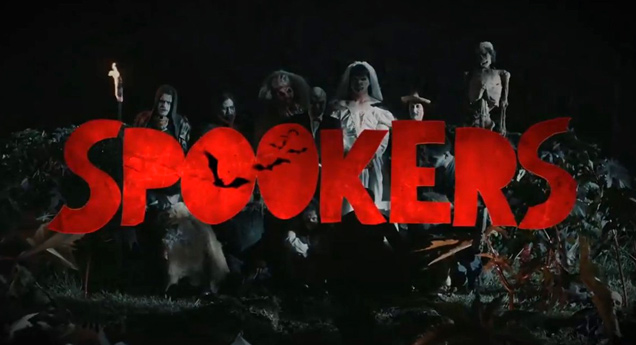
Since you’re staging these quite elaborate sequences, I guess it’s not the kind of film that finds itself through an editing process, right?
I don’t know if I’m supposed to say this, but I had a tiny little deal with our team. And that was like I could do whatever I wanted with the dream sequences – and I just wrote those and went to town on it – as long as the documentary parts were more structured in a way that’s comprehensible, and that was kind of like the under-the-table handshake I had. And I mean, it did evolve over. We had 30 days of filming, and that was split up into blocks. Maybe there were four doco blocks and the drama stuff we did in one block, but it was kind of edited like that. And yeah, I guess the doco stuff was a bit more structured in a way, right from the beginning. Didn’t change too much. But then making all the different elements work together was quite tricky. It was quite hard.
We see the crowds at Spookers a bit during the film, we see some of the people freaking out, but they don’t have much of a presence beyond that. Did you get a sense of what brings brings them there?
We filmed lots and lots of crowd stuff, but we kind of felt like the film was trying to do too much, and it felt a bit more like a TV doco having all these different elements. So then it was an editing choice to kind of make it more focused. They range from teenagers that turn 18 years old – and so it’s a thing, you turn 18, go to Spookers – to bus loads of students learning English, there’s also elderly people that come in buses sometimes, and there’s deaf groups. We interviewed them but they didn’t end up in the film. So there’s, yeah. It’s quite interesting. You could definitely make a film about the people that go there.
I saw a girl that was so scared that one of the staff was holding her, like embracing her and really slowly walking her through, and she had her hands over her eyes. And they were walking through it so slowly and he was so patient, and she was determined to walk through it. And then afterwards this young woman came and gave me a big hug. She just ran to me. I don’t know why she ran to me but she did, and I could just really feel that she has been through some really full-on trauma or abuse or something, you know? And she was doing this as some kind of personal challenge, or therapy, or something. I didn’t want to film any of that, that just felt wrong. So I wasn’t filming, just seeing it with my eyes but it was intense.
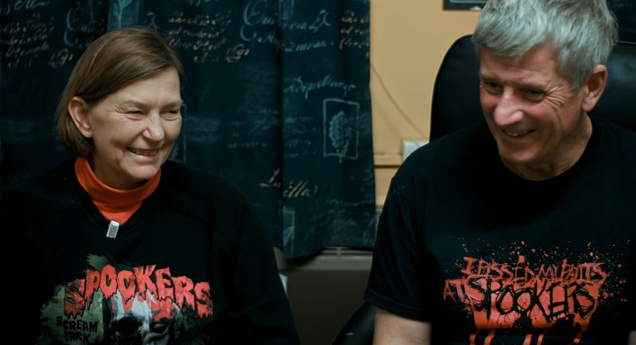
Had you been to Spookers before?
No. Heard about it but thought it was too scary.
So your first experience was really casting an eye on it with the film in mind?
Yeah.
So that lets you disassociate?
That’s right. Yeah, I’ve been paragliding with a video camera filming, and I wasn’t scared one bit.
Right, because you had that artificial barrier.
Something, yeah. But there’s no way in the world I would do that [laughs] this time. No way.
Flicks Editor Steve Newall travelled to Sydney Film Festival as part of Vivid Ideas courtesy of Destination NSW.
Florian Habicht was a guest of Sydney Film Festival and Vivid Ideas.
‘Spookers’ plays at the upcoming NZ International Film Festival





